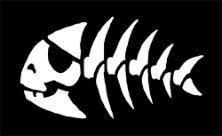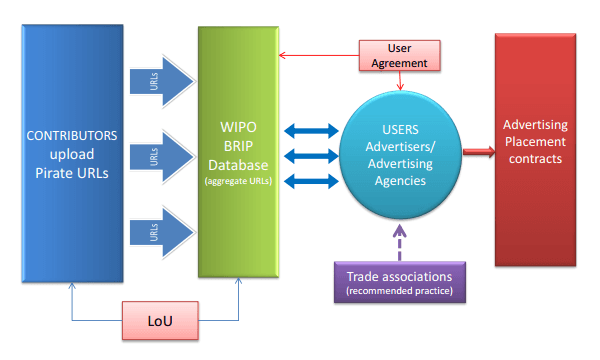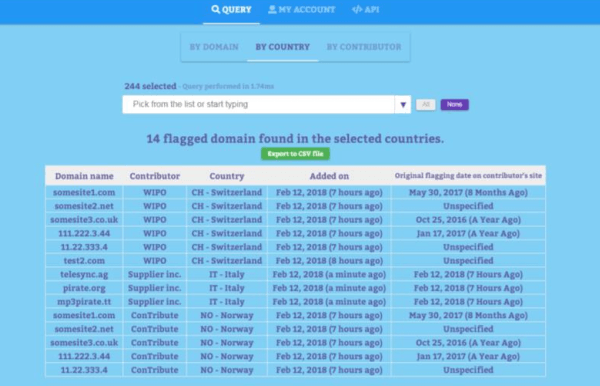WIPO Aims to Cut Revenue to Pirate Sites With Newly Launched Database

Thus far this has resulted in some notable developments. In the UK, hundreds of advertising agencies began banning pirate sites in 2014 and in Denmark and elsewhere there are similar initiatives.
While many rightsholders and advertisers are positive about these developments, there is little international coordination. This is a gap the World Intellectual Property Organisation (WIPO) hopes to bridge with a new project.
WIPO, which is part of the United Nations, was founded more than 50 years ago with the aim of protecting intellectual property. This includes combating online piracy, something it hopes to facilitate with its ‘BRIP’ Database, short for “Building Respect for Intellectual Property.”
The goal of the project is simple: allow stakeholders from member states to report problematic sites and share this list with advertisers, so they can block bad apples. This will result in less money going to pirate sites, making it harder for them to generate profit.
The idea for such a global database was first introduced by WIPO in 2017 and, behind the scenes, it was developed into a fully operational resource. According to a document released in preparation for a future WIPO’s Advisory Committee on Enforcement meeting, it is now ready to go public.
“The BRIP Database is now open for the acceptance of Authorized Contributors from WIPO Member States and Authorized Users from the advertising sector,” WIPO writes.
“It comprises a secure, access-controlled online platform, to which authorized agencies in WIPO Member States may upload lists of websites which deliberately facilitate the infringement of copyright.”
The BRIP database aims to cut revenue to pirate sites. In addition, it’s also useful to major brands who don’t want their products or services appearing on copyright-infringing websites.
“The intention is to reduce the flow of money to illegal website operators, to protect brands from tarnishment and to reduce the risk that legitimate advertising may lend an appearance of legality to illegal websites, to the confusion of consumers,” WIPO clarifies.
Each member state may appoint their own designated submitters who can add suspected pirate sites to the database. The Italian telecom regulator AGCOM and the Korean copyright protection agency KCOPA have already tested it in advance of the official launch.
In other countries, trade organizations and copyright enforcement bodies will likely join in as well. In the UK, for example, the City of London Police Intellectual Property Crime Unit (PIPCU) is likely to join, as they already maintain a similar list.

According to WIPO, international cooperation will ensure that stakeholders from all over the world can benefit from each other’s work. This is also helpful in order to block foreign pirate sites, which may not always be easy to identify due to language barriers.
Another advantage is that local member states don’t have to set up their own blocklist systems. They can simply use the BRIP system and get going right away.

There are downsides to the BRIP database as well. For example, it appears that there is little transparency, as the public at large doesn’t have access to the lists of blocked sites. This could be a concern, as WIPO itself states that not all blocked sites are clearly copyright-infringing.
“The operation of the BRIP Database is not based on any assertion by WIPO that any particular site has, as a matter of law, infringed copyright. Rather, the qualification for inclusion of a national list on the platform is that the list contains ‘sites of concern’,” WIPO writes.
“WIPO defines a site of concern as ‘an online location which is reasonably suspected by an Authorized Contributor of deliberately infringing or facilitating the infringement of copyright and related rights, whether in its country of establishment or elsewhere.”
Since the BRIP database doesn’t include any comprehensive information on why a site is included, this could potentially lead to over-blocking.
WIPO clarifies that it won’t get involved in any infringement related decisions. Its role is to administer the technical platform, to assist contributors and users, and to promote the BRIP database to a broad audience.
“The project responds to increased interest among policy-makers in methods of building respect for intellectual property which rely on voluntary cooperation, rather than on judicial or other compulsory measures,” WIPO notes.
“Its success will, however, depend on the extent to which it is adopted by Member State agencies and the advertising sector.”
The latter part is crucial. While higher-tier advertisers and major brands would like to avoid pirate sites, there are also plenty of advertising outfits that still love to work with pirate sites.
In fact, there are many players in the advertising industry that specifically target them.
—
More information on the BRIP database is available here (pdf), courtesy of the WIPO secretariat.
Source: TF, for the latest info on copyright, file-sharing, torrent sites and more. We also have VPN reviews, discounts, offers and coupons.




Leave a Reply
Want to join the discussion?Feel free to contribute!